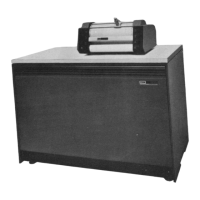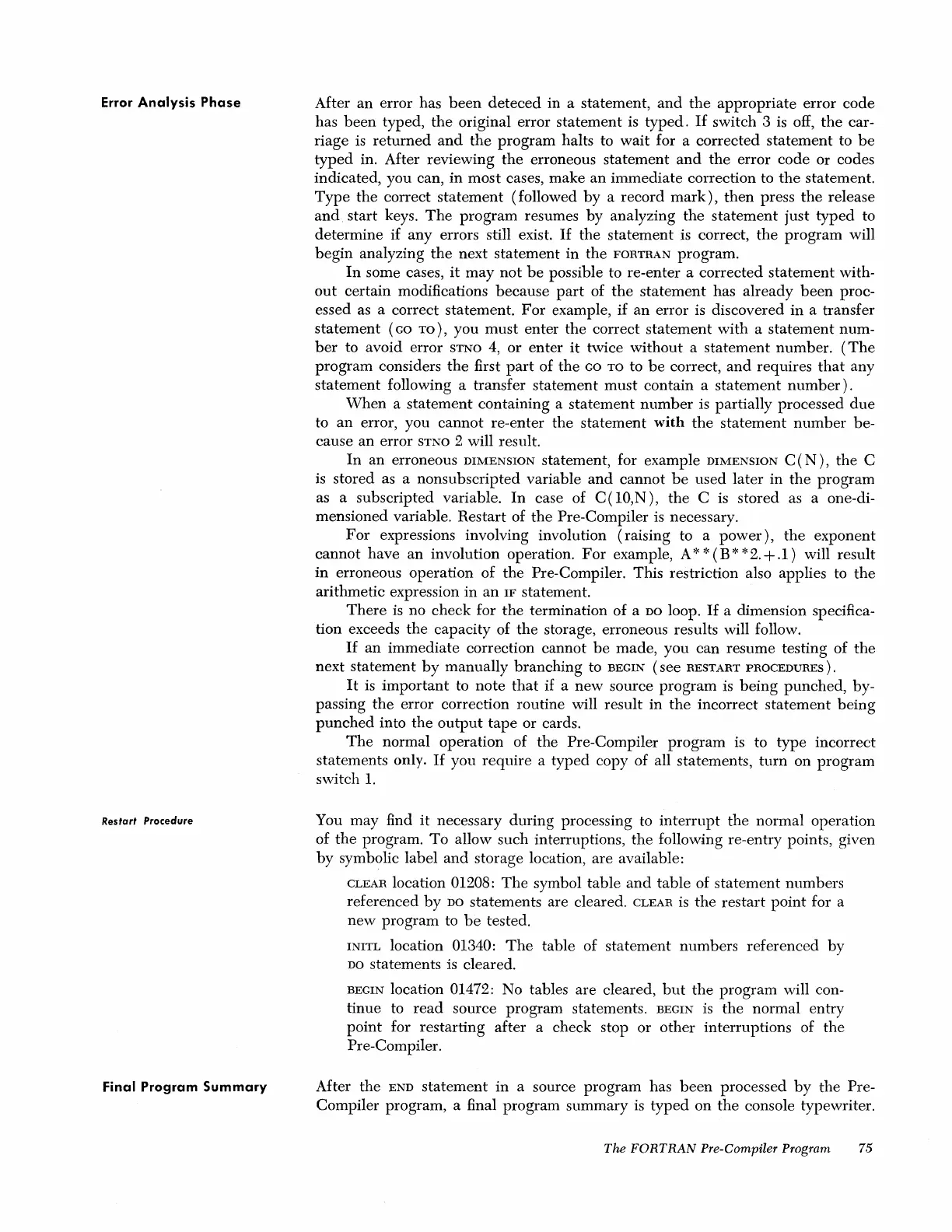
 Loading...
Loading...
Do you have a question about the IBM 1620 and is the answer not in the manual?
| Category | Desktop |
|---|---|
| Manufacturer | IBM |
| Model | 1620 |
| Introduced | 1959 |
| Weight | Approximately 1, 000 pounds |
| Memory | 20, 000 to 60, 000 digits |
| Programming | FORTRAN, Symbolic Programming System (SPS) |
| CPU | Decimal, variable word length |
| Storage | Magnetic disk drive (IBM 1311) |
Details floating point arithmetic, mantissa, and exponent representation.
Defines constants and explains fixed and floating point constant formats.
Explains variables, their distinction from constants, and naming conventions.
Explains subscripts for referencing array elements and defining arrays.
Describes how numerical calculations are defined using arithmetic statements.
Defines expressions and lists the basic FORTRAN operation symbols.
Explains control statements that provide flexibility in program development.
Describes the unconditional GO TO statement for transferring program execution.
Explains the computed GO TO statement for conditional transfers.
Details the IF statement for transferring program flow based on expression values.
Explains the DO statement for simplifying loop programming and providing flexibility.
Explains the rules for nesting DO statements within other DO statements.
Explains statements used to read data into programs and output results.
Details the READ statement for inputting data from punched cards.
Explains the PRINT statement for outputting data to the 1443 Printer.
Introduces specification statements, including FORMAT and DIMENSION.
Explains the FORMAT statement for controlling input/output data conversion.
Explains I (Integer) and F (Floating Point) conversion for output.
Explains the DIMENSION statement for allocating storage for arrays.
Explains the fundamental steps for creating the object program from source code.
Explains the procedures for loading the compiler program deck or tape.
Describes how to initiate compilation of the FORTRAN source program.
Explains how to load subroutine decks or tapes after source program compilation.
Details the procedures for loading and executing the compiled FORTRAN object program.
Explains how to use the trace feature to monitor program flow and check correctness.
Introduces FORTRAN subroutines, their types, and available sets.
Discusses errors, their codes, and FAC values for FORTRAN subroutines.
Lists subroutine error checks, error codes, and FAC values for error conditions.
Explains the two-phase operation: Error Analysis and Final Program Summary.
Categorizes the common errors detected by the Pre-Compiler program.
Details the steps required to load the FORTRAN Pre-Compiler program.
Explains how to process the source program using the Pre-Compiler.
Summarizes the DIMENSION statement for array declaration.
Summarizes the DO statement for loop control.
Summarizes the FORMAT statement for data conversion.
Summarizes the IF statement for conditional logic.
Summarizes the PRINT statement for printer output.
Summarizes the READ statement for card input.
Covers the process of inputting data via punched cards.
Provides an overview of the IBM 1622 Card Read Punch.
Provides an overview of the IBM 1443 printer.
Details the keys, lights, and switches for operating the 1443 printer.
Explains the operation of the 1443 printer's start key.
Details the operation of the 1443 printer's stop key.
Explains the function of the 1443 printer's ready light.
Describes the 1443 printer's sync check light and error conditions.
Explains the 1443 printer's parity check light indicator.
Details the manual controls for operating the 1443 printer.